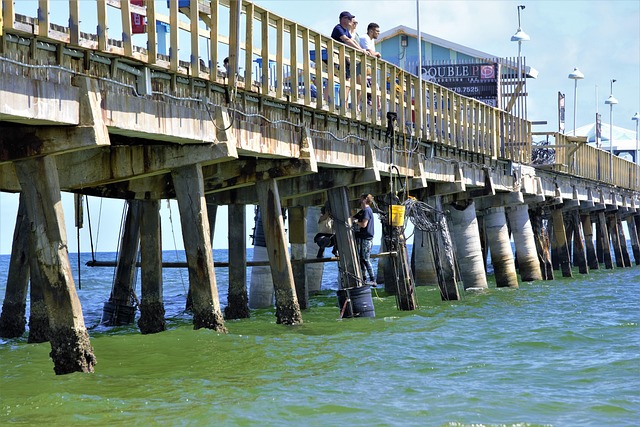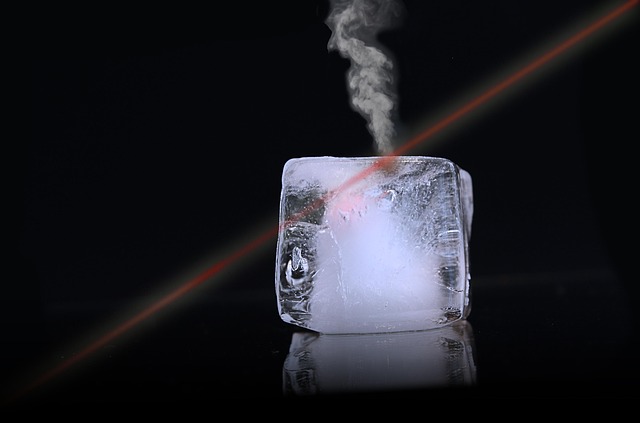Pier and beam foundations, common in older homes, require regular maintenance to prevent structural damage from soil settlement, drainage issues, and corrosion. Key steps for repair include initial assessment by skilled technicians, using advanced tools to identify damage, and implementing precise repair solutions like steel bar reinforcement or epoxy injection. Essential materials for successful repairs include durable piers, rebar, concrete, safety gear, and specialized equipment. Stabilizing and strengthening foundation piers with techniques like steel bracing or helical piles is crucial. Regular monitoring of signs of distress, such as sagging or cracks, is vital for prompt intervention by professionals to prevent further damage. Budgeting involves considering damage extent, material types, and labor costs, while regular maintenance practices ensure long-term stability.
Looking to shore up your home’s stability? Understanding pier and beam foundations and their potential issues is crucial. This comprehensive guide dives into every aspect of pier installation and repair, from identifying common problems like settling and shifting to navigating the step-by-step process of fixing or replacing piers. Discover essential tips for budgeting, maintaining, and when to seek professional Pier and Beam Foundation Repair expertise.
Understanding Pier and Beam Foundations: A Basic Overview

Pier and beam foundations, also known as post-and-beam foundations, are a traditional construction method often found in older homes. This system consists of vertical support beams that rest on pier blocks, which in turn sit on a solid base, typically concrete. The design allows for a flexible yet sturdy structure, distributing weight evenly across the foundation. Understanding this type of foundation is crucial when it comes to Pier and Beam Foundation Repair.
Regular maintenance is key to ensuring these foundations remain intact. Over time, factors like settling, shifting soil, or structural damage can compromise the stability of pier and beam systems. Visual inspections should be conducted periodically to identify any signs of deterioration, such as cracked or uneven beams or misaligned piers. Prompt attention to these issues is essential to prevent further damage and maintain the structural integrity of the building.
Common Issues and Problems with Pier Installations

Pier installations, a common method for reinforcing foundations, often face various challenges over time. One of the primary issues is settlement or shifting of the soil beneath the piers, which can lead to uneven surfaces and structural damage. This problem is exacerbated by poor soil conditions, such as expansive clay, which causes ground movement when it absorbs water. Regular inspection and maintenance are crucial for identifying any signs of settling early on, allowing for prompt Pier and Beam Foundation Repair.
Another frequent issue arises from environmental factors like excessive moisture or flooding, which can weaken the piers and surrounding structure. Corrosion is also a significant concern, particularly with metal components, requiring regular treatment and replacement to prevent extensive damage. Proper drainage systems and regular inspections are essential to mitigate these problems, ensuring the longevity of pier installations.
Inspection and Assessment for Repair

When considering Pier and Beam Foundation Repair, a thorough inspection and assessment are crucial steps. This initial phase involves meticulous examination of the pier structure, identifying any signs of damage or wear and tear. Skilled technicians use specialized tools to gauge the stability and integrity of the foundation, ensuring that repairs are targeted and effective.
The assessment process includes visual inspections, load testing, and sometimes non-invasive technologies like moisture meters to pinpoint issues. This detailed analysis allows for tailored solutions, addressing specific problems within the pier system. By understanding the scope of damage, professionals can recommend appropriate repair methods, ensuring the longevity and structural soundness of the foundation.
The Process of Pier Repair: Step-by-Step Guide

Pier repair, especially for pier and beam foundation systems, involves a meticulous process to ensure structural integrity. Here’s a step-by-step guide:
1. Assessment: Begin with a thorough inspection of the pier. Identify the extent of damage, which could range from cracks in the concrete to severe erosion or structural collapse. This crucial step guides the subsequent repair methods.
2. Safety First: Before attempting any repair work, prioritize safety. Ensure proper protective gear is worn, and consider hiring professionals if the damage is extensive. The foundation supports your entire structure, so any repairs must be carried out with care to avoid further complications.
3. Repair Method Selection: Depending on the damage, various techniques can be employed. Common methods include reinforcing with steel bars, replacing damaged sections of the pier, or in severe cases, entirely reconstructing the pier. For instance, if there are cracks, epoxy injection can help strengthen and stabilize the concrete.
4. Execution: Each repair method requires precision. For beam adjustments, carefully realign the beams to ensure they bear equal weight. In concrete repairs, mix and apply the chosen material according to manufacturer instructions. Regularly check for any signs of movement during the repair process.
5. Inspection and Monitoring: After initial repairs, conduct periodic inspections to monitor the pier’s stability. This ongoing observation ensures that any emerging issues are identified early, allowing for prompt action to prevent further deterioration.
Materials and Equipment Required for Pier Replacement

When undertaking pier and beam foundation repair, having the right materials and equipment is paramount for a successful project. The essentials include sturdy replacement piers made from durable materials like steel or concrete, designed to withstand local soil conditions. Reinforcement bars (rebar) are crucial for providing additional support during reconstruction, while high-quality concrete is needed to ensure long-lasting repairs. Safety gear such as gloves, goggles, and hard hats should be mandatory due to the nature of the work. Additionally, tools like excavators, jack hammers, and welding equipment will facilitate efficient removal of old piers and installation of new ones. Measuring tape and level tools are also vital for accurate measurements and ensuring the new piers are aligned correctly.
Techniques for Stabilizing and Strengthening Foundation Piers

When dealing with pier and beam foundation repair, stabilizing and strengthening the foundation piers is a crucial step to ensure structural integrity. One effective technique involves using steel bracing or reinforcement bars. These are strategically placed within the pier to provide additional support, distributing weight more evenly and preventing further settling. This method is particularly useful for piers showing signs of rot or damage, as it not only reinforces the existing structure but also prevents future deterioration.
Another popular approach is the installation of helical piles or steel columns. This involves drilling new piles into the ground at a depth that reaches stable soil layers, then connecting them to the existing pier structure. Helical piles offer exceptional load-bearing capacity and can help stabilize sloped or uneven terrain. This technique is especially beneficial for older homes with piers that have settled differently due to changes in soil conditions over time.
When to Consider Professional Help for Pier and Beam Repairs

If your home has a pier and beam foundation, it’s crucial to be aware of potential repair needs. While some minor adjustments can sometimes be tackled by homeowners, there are instances where professional help is indispensable. Signs that indicate the need for expert intervention in Pier and Beam Foundation Repair include noticeable sagging or misalignment of floors, doors, or windows; sudden or increasing cracks in walls or foundations; uneven or sinking floors; or water damage in the basement or crawl space.
These issues could point to structural problems within the pier and beam system, which requires specialized knowledge and equipment for safe and effective repairs. Professional Pier and Beam Foundation Repair services can accurately diagnose the root cause of these problems, ensuring that any solutions are tailored to your specific situation. This not only prevents further damage but also maintains the structural integrity and longevity of your home’s foundation.
Cost Estimates and Budgeting for Foundation Pier Work

When it comes to budgeting for pier and beam foundation repair, cost estimates can vary widely based on several factors. The extent of damage, the type of piers involved (wooden, concrete, steel), and whether structural elements need replacement or reinforcement all play significant roles in determining the financial outlay. It’s crucial to secure detailed quotes from reputable contractors specializing in this niche area of foundation repair. They can provide insights into potential costs for labor, materials, and any necessary permits, ensuring you have a comprehensive understanding of the project’s financial requirements.
Proper budgeting requires factoring in not just the immediate repair but also potential future maintenance. Many pier and beam systems require periodic inspection and upkeep to maintain their structural integrity over time. Incorporating these long-term costs into your initial budgeting can help avoid unexpected expenses down the line, ensuring stability for both homes and budgets alike.
Maintenance Tips to Prevent Future Pier Damage

Regular maintenance is key to preventing future pier and beam foundation repair issues. One of the simplest yet most effective measures is to ensure proper drainage around your structure. Prevent water from pooling or stagnating near the piers by installing adequate gutters, downspouts, and redirecting surface waters away from the foundation. Regularly inspect the piers for any signs of rot, especially in wooden piers, as this can weaken the structural integrity.
Another crucial tip is to keep the area around the piers clear of debris and vegetation. Overgrown plants or objects resting on the piers can cause damage over time. Additionally, monitor the soil conditions near the piers. Settling or shifting soils can put stress on the foundation, so addressing any changes promptly can help avert potential problems.
